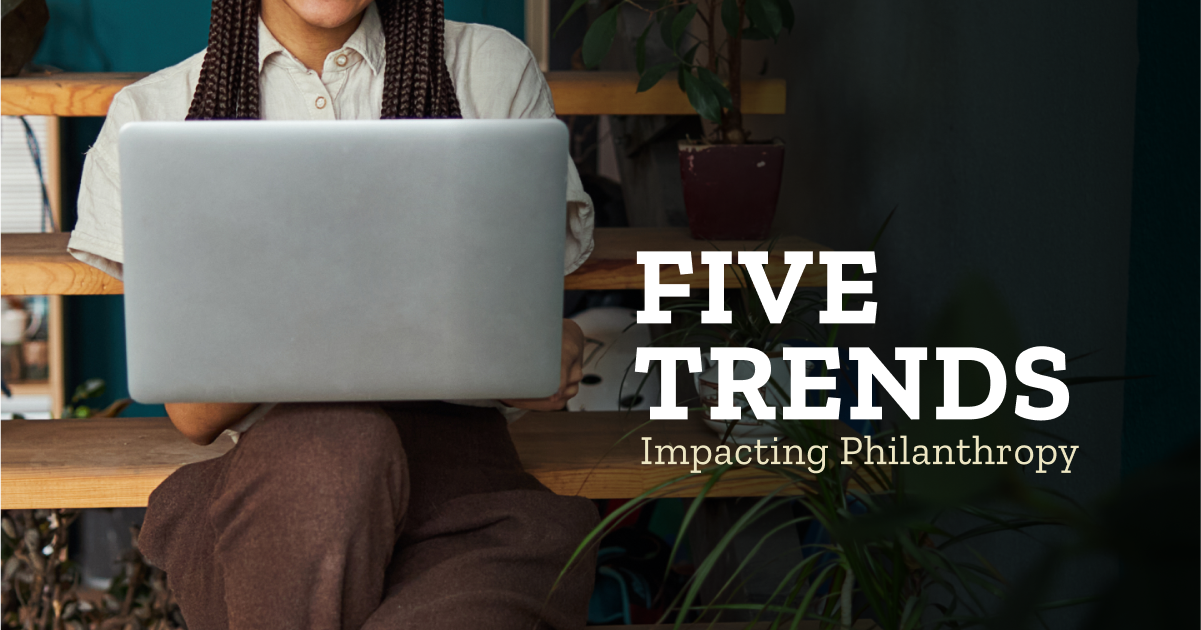Benefactor Group is proud to be a member of the Giving Institute: a consortium of the nation’s philanthropic service firms who adhere to the highest performance and ethical standards.
Last month, five members of our team traveled to Indianapolis for the Giving Institute’s annual meeting of the minds: the Summer Symposium. This event brings together fundraising and consulting voices from across the United States to discuss major trends, opportunities, and concerns affecting philanthropy—and to consider the future of our sector.
Here are five takeaways that stuck with us.

Artificial intelligence is shaping the future of countless industries—including fundraising
Fortunately, there is much more to embrace than there is to fear. Consider how the power of AI can help to automate basic fundraising functions (e.g., tasks ranging from routine administration to prospect identification and research), freeing your team to focus their energies on donor strategy and personal cultivation.
At the same time, it’s important to understand how donors’ expectations may begin to change—an increased expectation of more personalized fundraising communications, for example—as artificial intelligence becomes embedded in our day-to-day operations. As one attendee noted, “AI is driving a race to intimacy.” Check out this site to stay abreast of responsible AI practices.

Fewer “everyday donors” are participating in philanthropy today—but we have opportunities to shift this imbalance
According to the Fundraising Effectiveness Project, nonprofits reported a 1.7% decline in total dollars received last year—but a 10% decline in donor counts. This aligns with a larger story: household participation in charitable giving has declined steadily for two decades; today, fewer than half of households report making a charitable gift each year.
So—how should nonprofits respond? Consider the strategies outlined in this article, written by our founder Laura MacDonald. In addition, we encourage you to learn more about the Generosity Commission, a nonpartisan group using research to contribute to a deeper national understanding about how individual givers and volunteers are reimagining generosity in powerful, positive ways.

It’s time to change the narrative around giving to religion
Giving to religion continues to be—by far—the largest recipient of charitable dollars. However, for years, its share of the total pie has been declining. There are several factors that help to explain these results—including declining attendance rates for religious services and declines in religious affiliation overall.
Another factor is this: giving to religion is defined narrowly as contributing to congregations, missionary societies, religious media, and denominations. This means organizations such as the Salvation Army are classified under other categories outside of religion, such as human services.
But when the definition is broadened, the narrative changes dramatically. When donors were asked directly, 73% categorized their giving as religious or motivated by religious values.
In short, there are more nuances to understanding giving to religion than a cursory look at the numbers may explain. As Dr. David King, Karen Lake Buttrey Director of Lake Institute on Faith & Giving at the Lilly Family School of Philanthropy, explained: “The sky is not falling. The ground is just shifting.”

The golden age of planned giving beckons
Credible sources project that wealth transferred through 2045 will total $84.5 trillion—of this, $72.6 trillion in assets will be transferred to heirs, while $11.9 trillion will be donated to nonprofits. What can—and should—nonprofits do to prepare? Some of the headlines include: develop a strong case for planned giving; refresh (or design!) your planned giving program now; push multichannel planned giving marketing; and above all—embrace complexity. You can download a presentation by our Paul Yehgiayan here to learn more.

We must work together to build a more inclusive, vibrant future for our sector
Despite philanthropy’s deep importance and long-held traditions, recent research has rekindled concerns about the health of our sector—including those uncovered in this report, What Americans Think About Philanthropy and Nonprofits, which examines public perceptions of philanthropy. We believe the journey to reinvigorate public trust and reverse the declining donors trend is a long one—but one with the potential to greatly enhance the overall vitality of the sector.
The Golden Age of Planned Giving Beckons
Download the presentation from Giving Institute Summer Symposium 2023, courtesy of our own Paul Yehgiayan!






